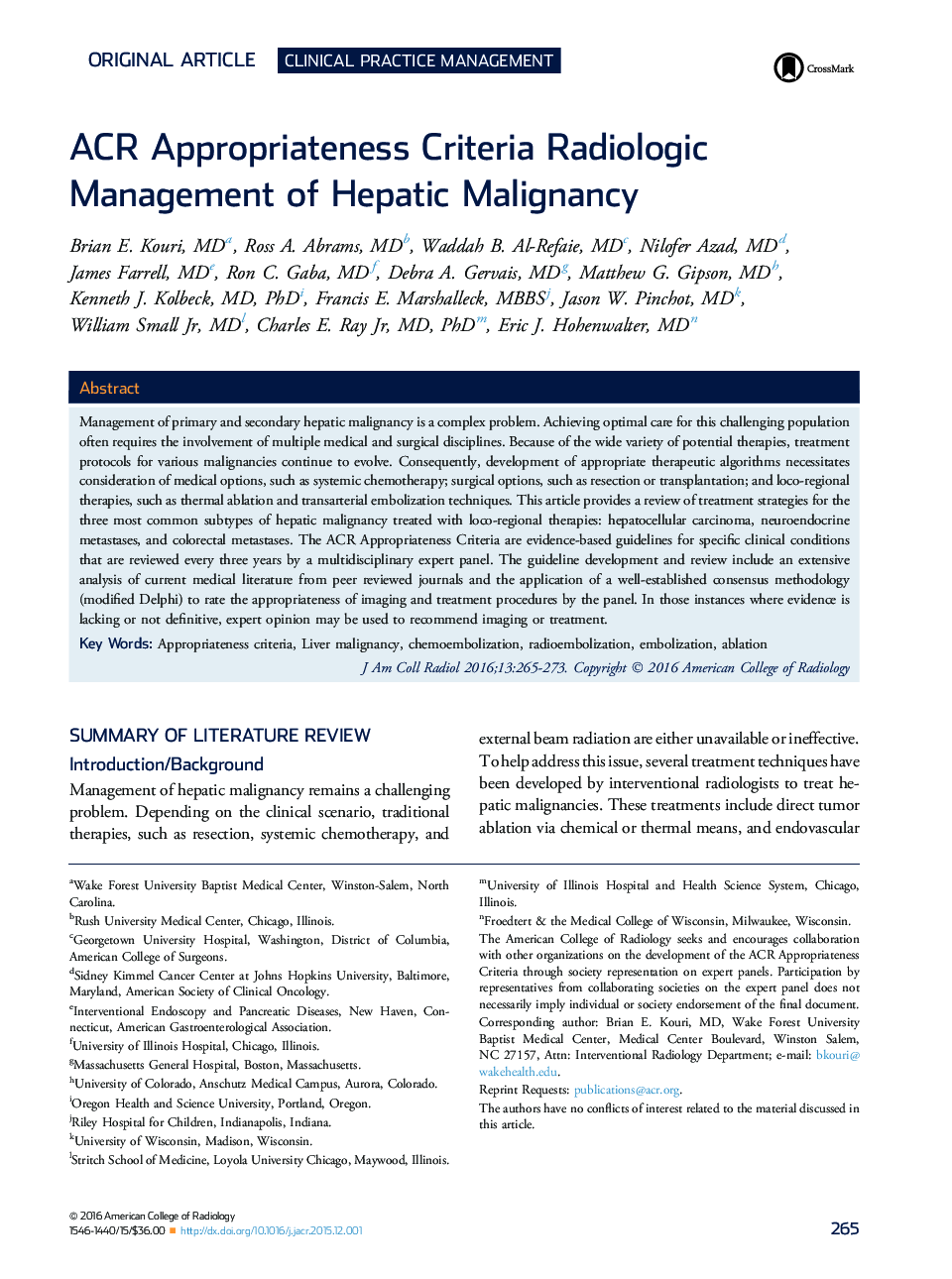| Article ID | Journal | Published Year | Pages | File Type |
|---|---|---|---|---|
| 4230259 | Journal of the American College of Radiology | 2016 | 9 Pages |
Abstract
Management of primary and secondary hepatic malignancy is a complex problem. Achieving optimal care for this challenging population often requires the involvement of multiple medical and surgical disciplines. Because of the wide variety of potential therapies, treatment protocols for various malignancies continue to evolve. Consequently, development of appropriate therapeutic algorithms necessitates consideration of medical options, such as systemic chemotherapy; surgical options, such as resection or transplantation; and loco-regional therapies, such as thermal ablation and transarterial embolization techniques. This article provides a review of treatment strategies for the three most common subtypes of hepatic malignancy treated with loco-regional therapies: hepatocellular carcinoma, neuroendocrine metastases, and colorectal metastases. The ACR Appropriateness Criteria are evidence-based guidelines for specific clinical conditions that are reviewed every three years by a multidisciplinary expert panel. The guideline development and review include an extensive analysis of current medical literature from peer reviewed journals and the application of a well-established consensus methodology (modified Delphi) to rate the appropriateness of imaging and treatment procedures by the panel. In those instances where evidence is lacking or not definitive, expert opinion may be used to recommend imaging or treatment.
Keywords
Related Topics
Health Sciences
Medicine and Dentistry
Radiology and Imaging
Authors
Brian E. MD, Ross A. MD, Waddah B. MD, Nilofer MD, James MD, Ron C. MD, Debra A. MD, Matthew G. MD, Kenneth J. MD, PhD, Francis E. MBBS, Jason W. MD, William MD, Charles E. MD, PhD, Eric J. MD,
